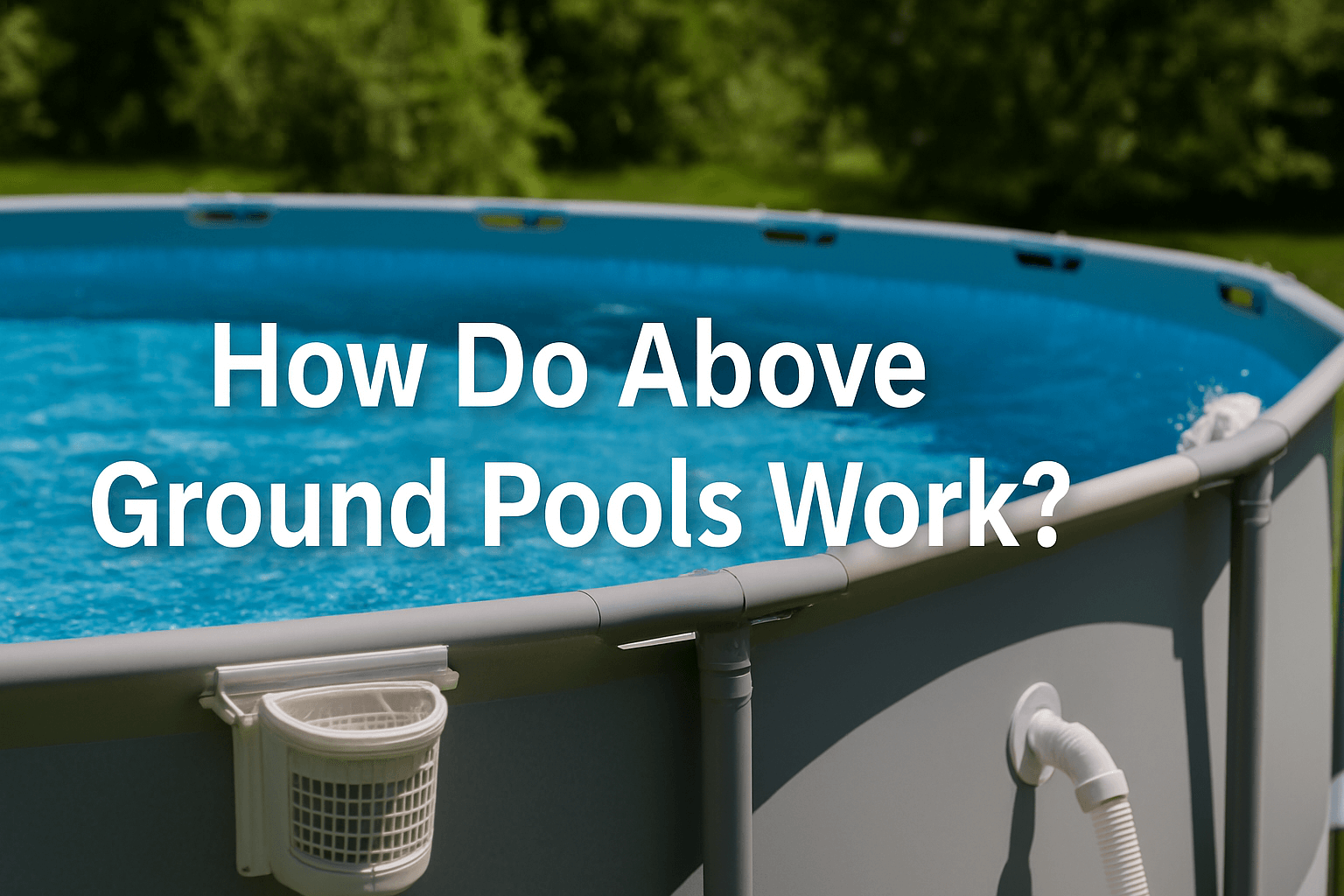
How Do Above Ground Pools Work?
Ever wondered how a portable small swimming pool turns your garden into a mini holiday resort?
Short answer: above ground pools work by pumping, filtering, and circulating water to keep it clean and safe.
Stick around to uncover the fun science, simple setup, and splash-worthy secrets behind these backyard beauties!
The Essential Components of an Above Ground Pool System
The Pool Structure and Liner
How the frame and walls provide support
Think of the pool's frame like the skeleton of a tent — strong, structured, and built to hold everything up.
Most above ground pools use steel or aluminium panels that form the outer shell. Once set up, they lock into place, creating a solid ring around your water.
It’s surprisingly sturdy — especially when you consider it's just sat on your lawn. Some families even put these up for summer birthdays or weekend barbecues and are amazed how long they last.
The role of the vinyl liner in containing water
Inside the structure sits the vinyl liner — your pool’s unsung hero.
This is what actually holds the water in. It’s a bit like lining a paddling pool inside a bucket — the bucket gives shape, the liner keeps things watertight.
Liners come in different patterns too, so your pool can look stylish as well as safe.

The Filtration and Circulation System
How the pump and filter keep the water clean
Now let’s talk water — because no one wants to swim in a murky mess.
Every above ground pool uses a pump and filter system to move water through and clean it as it goes.
The pump pulls water from the pool, pushes it through a filter, then sends it back in.
This keeps dirt, bugs, and tiny nasties like algae out.
It's like a washing machine for your pool — always working in the background.
The skimmer and return jet explained
You’ll usually see a skimmer box on the side of the pool — it sucks in leaves, twigs, and floaty bits before they sink.
Then the return jet pushes the clean water back in, creating that little whirlpool effect kids love to chase.
Together, they keep the water moving and fresh — and stop your pool turning into a duck pond.

How Water and Chemicals Are Managed
The Importance of Water Circulation
Preventing stagnant water and algae growth
Still water might sound relaxing, but in a pool, it’s a recipe for slime.
Without movement, water turns green fast — especially in hot weather.
That’s why circulation matters. The pump keeps things flowing, and moving water doesn’t give algae a chance to settle.
It’s the difference between swimming in a clear oasis or a frog bath.
Distributing chemicals evenly
Circulation isn’t just about movement — it’s about mixing.
When you add chlorine or other treatments, the water needs to carry those around evenly.
Think of stirring sugar into tea — no one wants all the sweetness in one sip.
Same idea here. Good circulation means clean, balanced water across the whole pool.

The Role of Pool Chemicals
Sanitisers (chlorine) and water balance (pH, alkalinity)
Chlorine’s the star of the show — it zaps bacteria and keeps swimmers safe.
But it’s not working alone. You’ll also need to check pH and alkalinity.
Too acidic? It can sting your eyes. Too alkaline? The water goes cloudy, and the chlorine stops working properly.
Getting the balance right keeps everything comfy and crystal clear.
Why proper testing is crucial
Here’s the bit most people forget: you have to test the water regularly.
Once a week is ideal — even more often during heatwaves or heavy use.
You can use simple dip strips or test kits from your local pool shop.
It’s a five-minute job that saves hours of headache later.
Trust us — your pool (and your skin) will thank you.
Have you checked out our other posts?
Can Above Ground Pools Be Repaired?
Can Above Ground Pools Be Recycled?
Can Above Ground Pools Be Left Out In The Winter?



Leave a comment